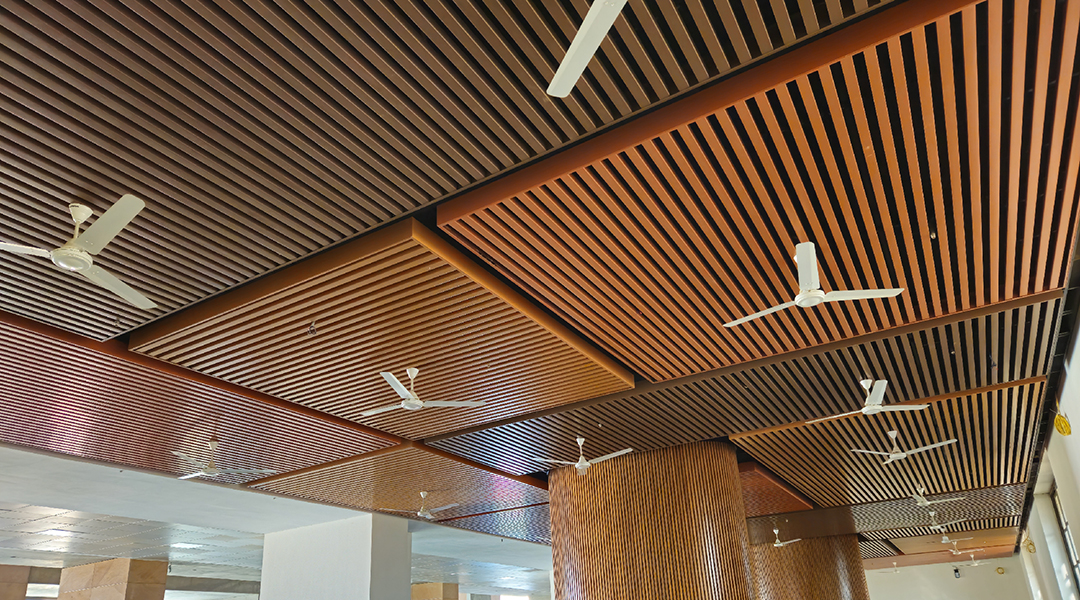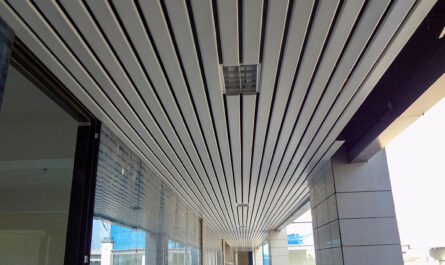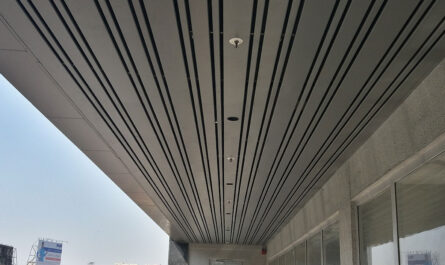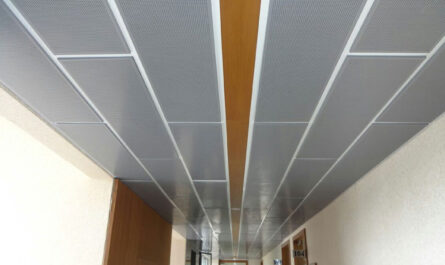Metal ceilings are among the most marvelous concepts in modern commercial environments for transcending the traditional conception of ceiling. This architectural innovation marries modern approaches with aesthetics and efficiency, completely changing the way a customer interacts with a retail space.
The evolution of metal ceiling technologies reflects what is going on in architectural design and broader retail strategy: these objects, once considered passive architectural elements, increasingly become active participation in the brand narrative, experience, and efficiency of operation for a customer. They can be defined to be built at a complex interface with material science, acoustic engineering, lighting design, and spatial psychology.
In all fact, these visual effects should be considered paramount when dealing with metal ceilings. If traditional ceiling materials usually just blend into the background, metallic surfaces give absolutely new dimensions to design flexibility. The overhead landscapes for architectural and retail designers are currently available from the sleekest minimalist composition to the most elaborate and textured settings. From highly polished, mirror-like reflective surfaces to nuanced, subtly textured patterns, finishes span an extraordinarily wide spectrum that might evoke certain emotional responses or reinforce specific narratives for a brand.
Acoustics are emerging major functional considerations for metal ceiling design in retail environments. Today’s systems include advanced sound absorption and diffusion technologies that make a ceiling-plane part of active acoustic management. This is accomplished through perforated metal panels with specialized acoustic backing materials, which reduce sound reflections and create an envelopment of pleasant sounds to improve customer intimacy and minimize auditory fatigue.
Lighting integration would be yet another very complex aspect of ceiling design made of metals. The inherent reflective surfaces of metals allow ingenious application of lighting manipulation techniques. Therefore, the designers can use metal ceiling geometries to produce great distributions of light, highlight retail zones, and create very fascinating visual stories creating subtle guidance of the customers’ movement and focus. Such advanced systems would even include programmable LED technologies whereby ceilings become dynamic, responsive lighting platforms.
Clearly, durability and maintenance differentiate metal ceiling systems from other regular overhead materials. The retail environment also requires a much better performance-the surfaces are to withstand almost constant environmental stresses, remain as aesthetic as possible, and allow relatively easy cleaning. Special metal coatings ensure that surfaces resist attacks from acid, bacteria, and their environments to remain performing during years of vigorous usage.
The modular design approach has brought a great change in how the metal ceiling system is installed in retail spaces. Advanced solutions promise a never-before installation flexibility, making the space reconfiguration and adaptive strategies very quick. Removable panels, integrated access points for mechanical systems as well as standardized mounting solutions enable the retailers to modify spatial configurations with minimal disruption, further moving the retail world to an increasingly dynamic environment.
Technological Integration is an emerging frontier in metal ceiling design. Modern age systems incorporate embedded sensor technologies, digital displays or programmable mechanisms of lighting that access dynamic response to different retail scenes. Such intelligent ceiling systems transform passive overhead planes as first architectural elements to be active, responsive design interventions that have abilities to gather customers’ flow tracking information, adjust environmental settings and support a high degree of retail analytics.
Sustainability has increasingly dictated the choices made in today’s metal ceilings. Most of the state-of-the-art products contain a high content of recycled material and are themselves recyclable at the end of the product lifecycle. That is the advantage of metal ceiling systems: the inherent longevity reduces the frequency of the replacement of the material, thereby serving larger goals of environmental conservation and also dovetailing corporate mandates toward increasingly sustainability goals.
Brand expression is becoming an increasingly popular but sophisticated design consideration in the use of metals for ceilings. Customized perforation patterns, specialized finishes, and graphic elements will allow retailers to take their brand narratives beyond traditional surface treatments. Ceilings have become strong, three-dimensional communication platforms to further immerse consumers into the brand identity through space memorable yet beyond conventional means of marketing.
Thermal performance is a very well underappreciated benefit of strategic metal ceiling design. Modern systems can also tie in thermal management technology that really allows for better control over indoor environmental conditions. Almost directly, reflective surfaces assist with heat radiation management and probably contribute to a larger building’s overall energy efficiency strategy and savings in operational costs over time.
Despite all this, compliance with mandatory regulations remains one of the most vital considerations in selecting metal ceiling systems. Fire safety ratings, acoustic performance standards, and environmental certifications must all be analyzed thoroughly. Nowadays, top manufacturers provide very detailed documentation for compliance with ever-stringent building performance requirements, thus bringing architects and designers closer to producing safe but high-performance retail environments.
Different ceiling types have different complexities of installation. Some metal ceiling systems would require expertise and precision engineering to install, while others are pretty straightforward to implement. Architects and retail designers must assess the aesthetic and performance characteristics of metal ceiling systems, but they also must consider aspects such as installation and maintenance, as well as longer-term performance.
Given these installations, it becomes another important dividend in buying metal ceilings. Although these systems may be costly upfront, in the long run, their performance is going to offer returns on that cost. Long maintenance-free life, improvement of durability, and energy efficiency all translate into potentially great economies, compared to substituting with traditional ceiling solutions.
The modern future of metal ceilings within retail spaces appears to strike a balance between elegant design and advanced technology. Recent studies explore ceiling systems that, responsive to changing climate conditions, can adapt according to various activities. Some promising innovations may include self-cleaning surfaces, built-in air purification systems, or ceilings that adapt their thermal and acoustic properties in real time.
The continued evolution of retail design can be seen in how changing customer behavior and technological advancements are creating an important space for metal ceilings in architecturing compelling spaces of high technology. They provide an untrammeled aesthetic flexibility and functional performances with huge technological potentials that make them essential aspects in transforming retail environments.
It represents a shift in the design of metal ceiling systems: an evolutionary trajectory from architecture to technology into the future of organized and intelligent space-responsive built environments. They do not merely cover overhead space; they are effects of sophisticated design interventions that can actively change how we perceive and interact within retail spaces.
Architects, designers, and retail strategies will find themselves in a very favorable position to create true innovative environments that engage customers, support operation efficiencies, and push limitations concerning architectural possibility, fully utilizing the potential of metal ceiling technologies. It is an intelligent, dynamic system made possible to change the customer’s experience in retail spaces, rather than just a design element.




